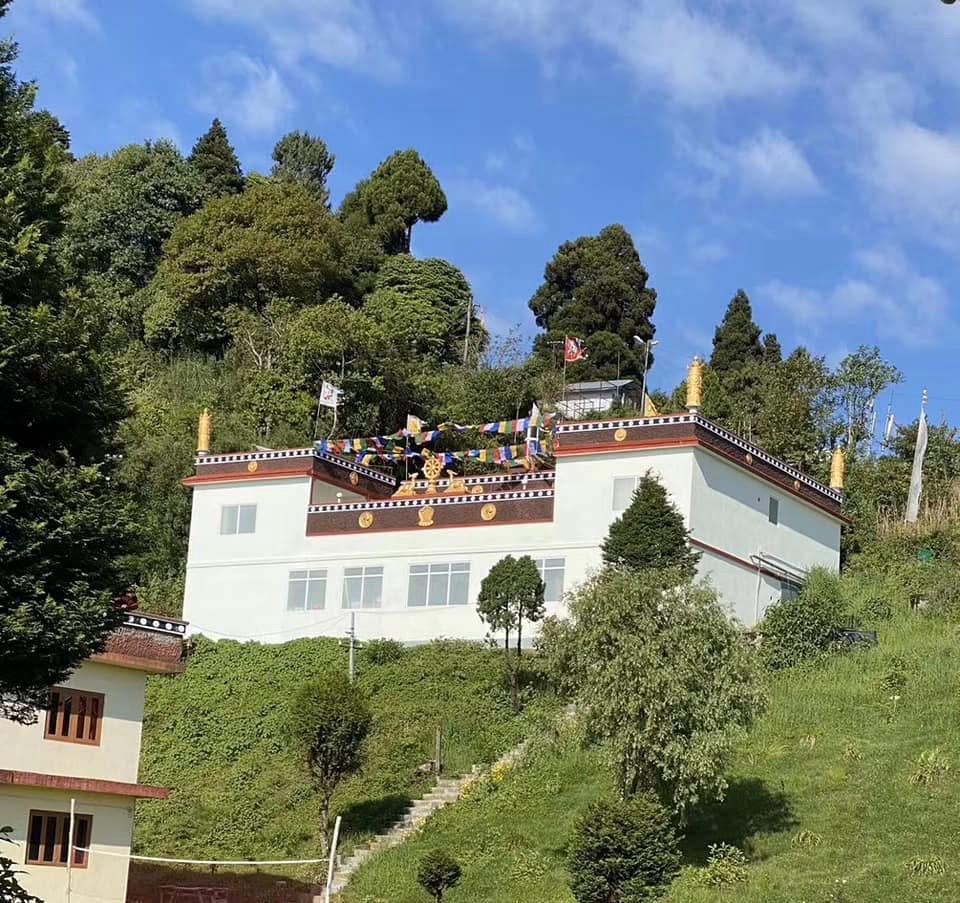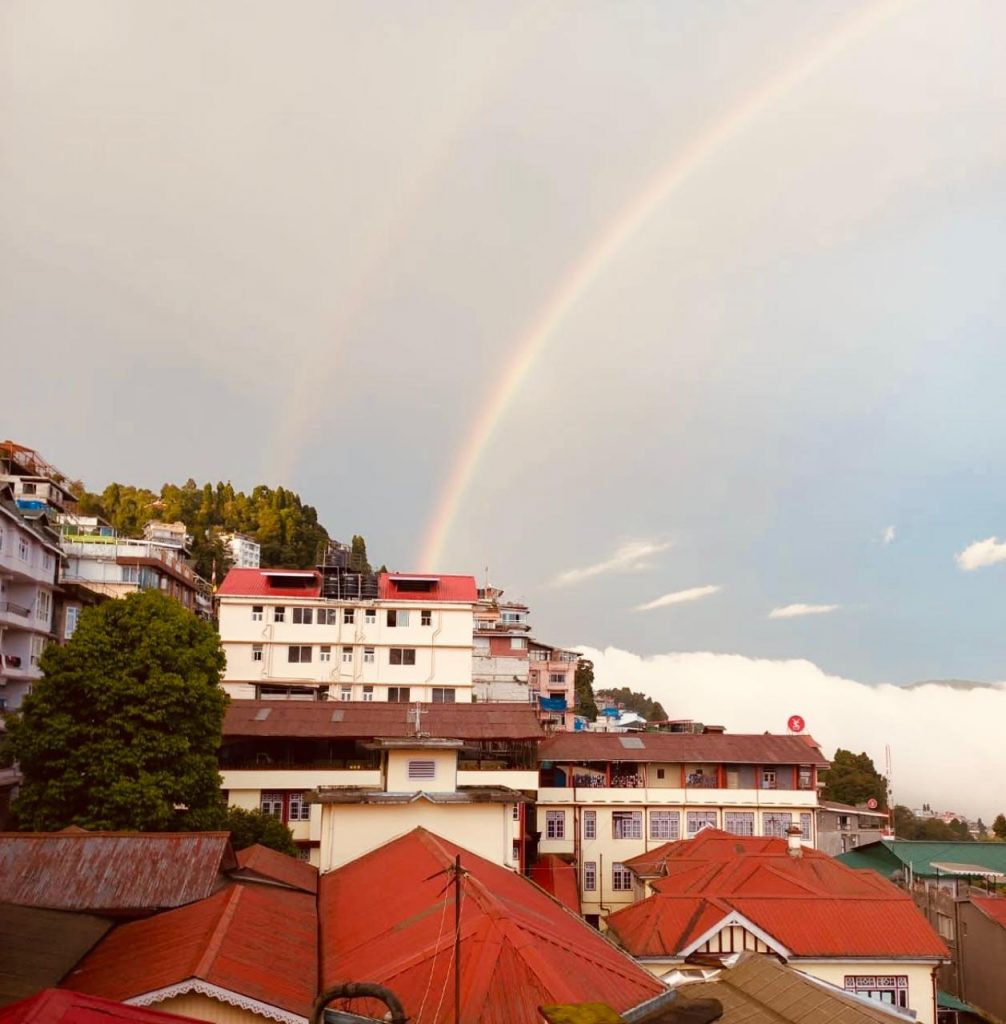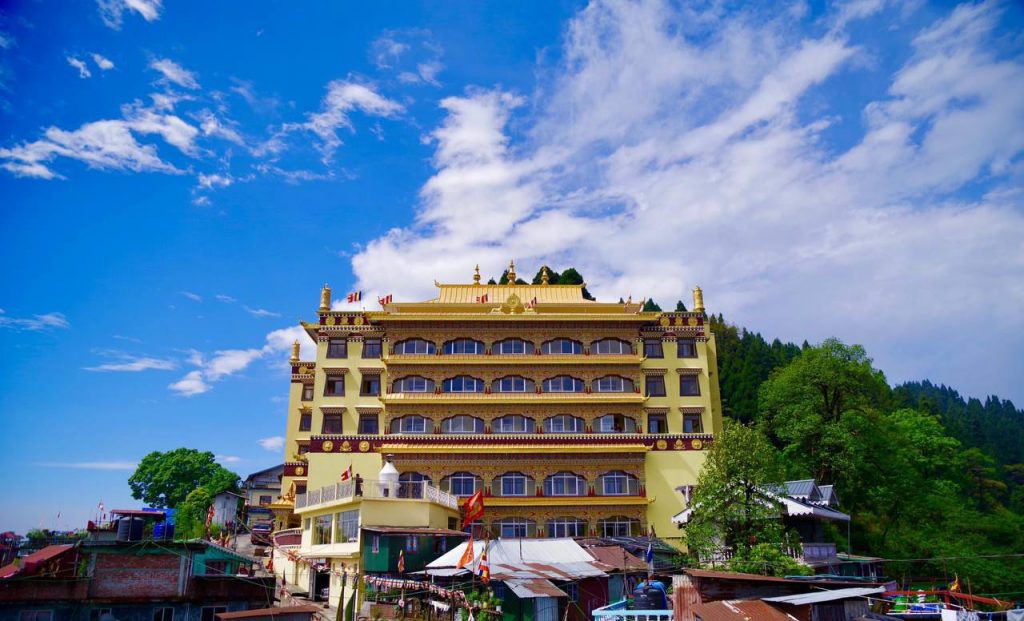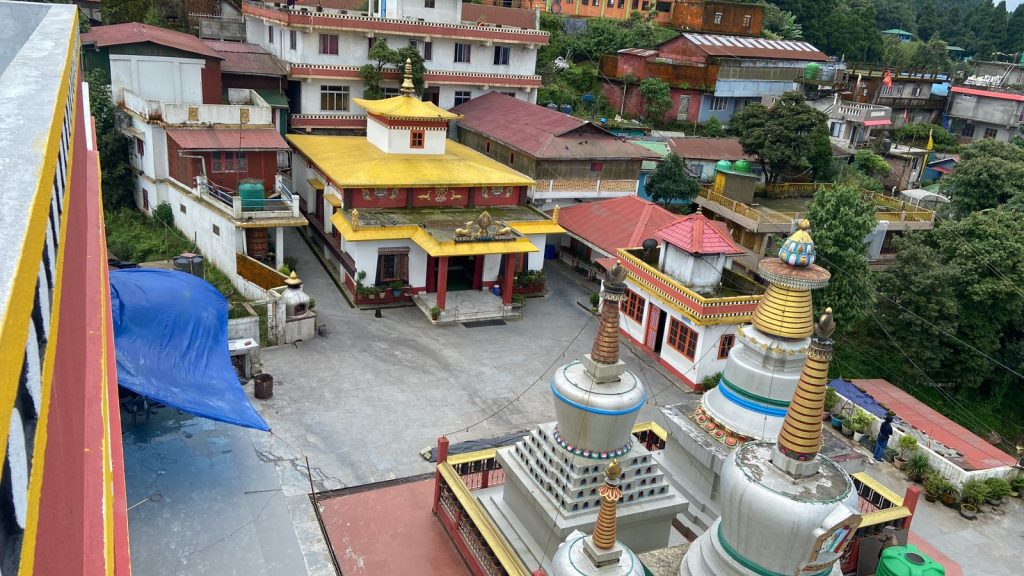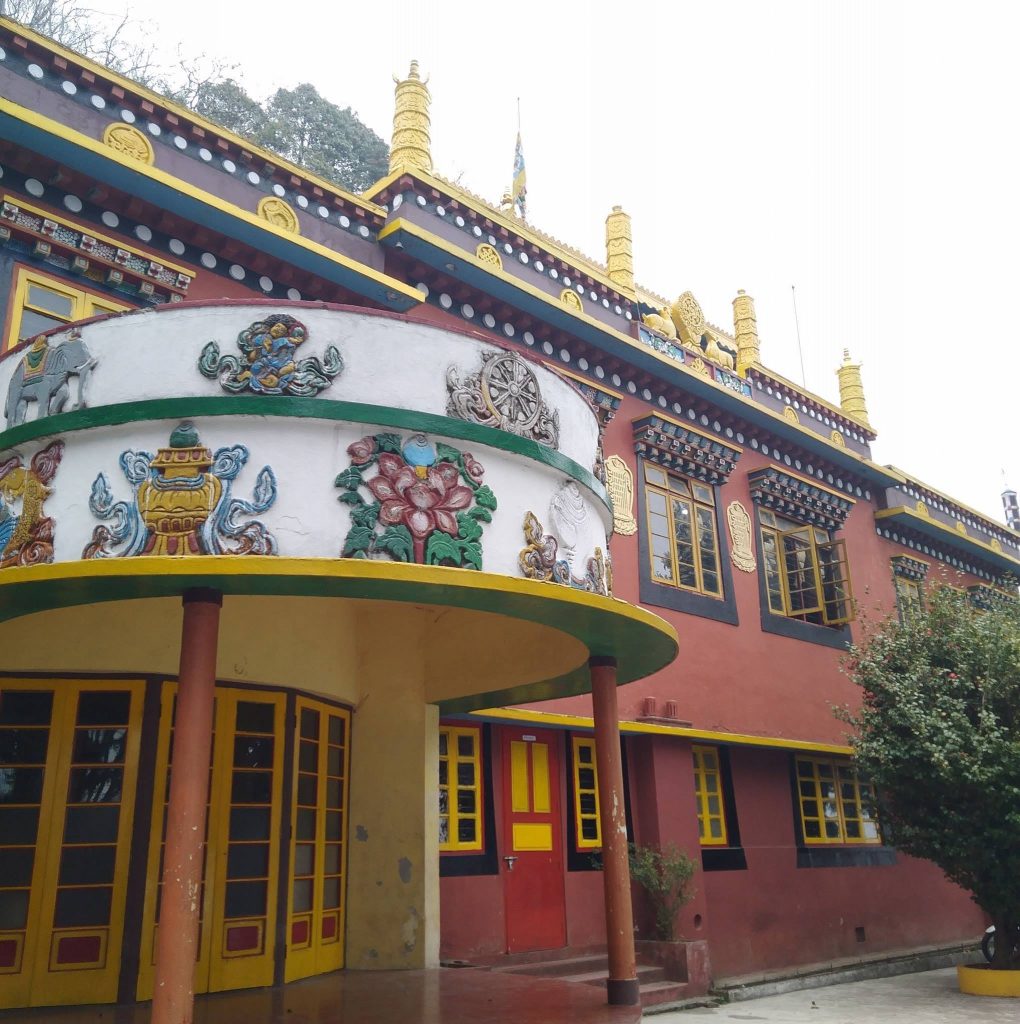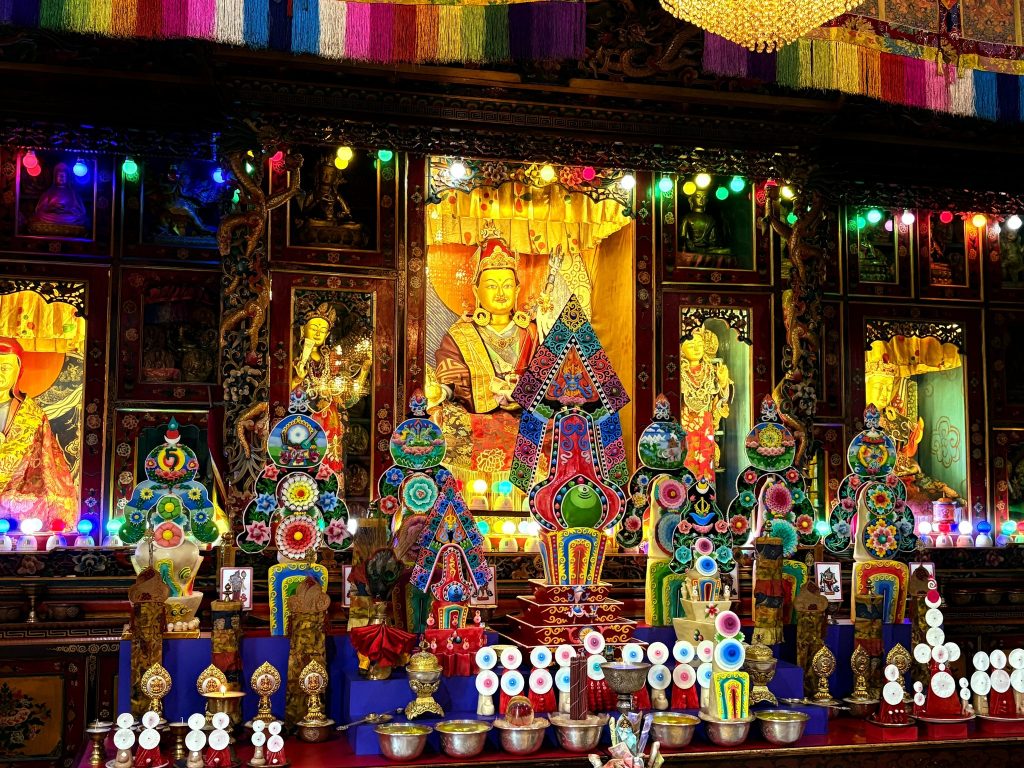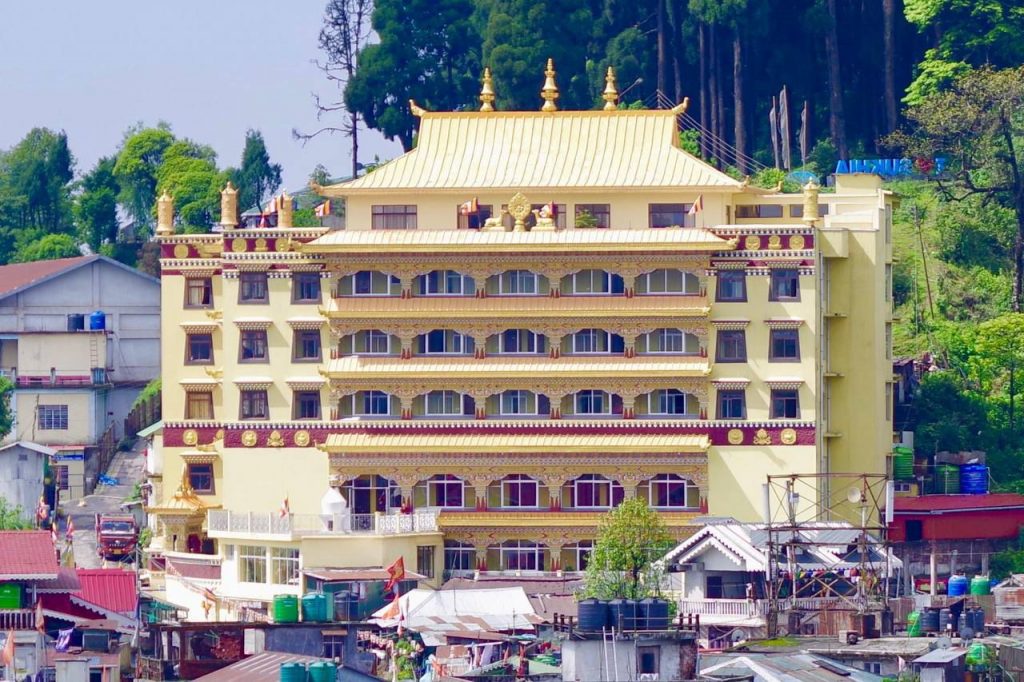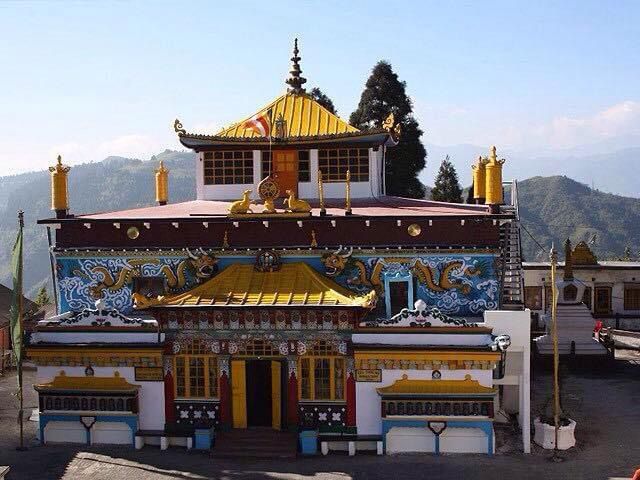Tibetan Refugee Self-help Centre :
The Tibetan Refugee Self-Help Centre is one of the cluster settlement located in Darjeeling near Lebong. It was started on October 2, 1959. Following the dramatic escape of His Holiness the Dalai Lama from Tibet followed by period of mayhem, when thousands of Tibetans had to leave their hearth and home, and fled into neighboring countries so they could live as free human beings. The overwhelming majority of these refugees had brought nothing with them apart from the clothes they wore and what little provisions they could carry with them as they began the long and difficult trek over the Himalayas. Driven out of their homeland into a different environment and without any knowledge of the language, customs and social institutions of the countries where they had sought refuge, the long-term rehabilitation of the refugees posed innumerable difficulties. But right from the initial stages, TRSHC recognized that the need of the hour was the determination to stand on our own feet and rely first and foremost on our own effort- in short, the spirit of Self-Help. Therefore, the Centre was established with merely just four workers initially in nearly 65 years ago. Today the Centre is home to 650 refugees. Over the years, the Centre has undertaken multifarious activities ranging from the production of Tibetan traditional handmade carpet and other handicrafts for livelihood and preserving Tibetan traditional crafts. The centre has also given various training of artisans and craftsmen to its people. The Centre take care of the sick, the old, the orphaned and the needy with their own income. In 1961, the Centre was officially registered as a charitable organization under Indian law. It has also received an exemption from income tax on all gifts and donations made to them.
School & Educational Centre:
Since education plays indeed a crucial role in empowering individual which in turn empower society and the nation at large. Hence, Central Tibetan Administration allocates around 22% of its annual budget on education related purposes through Department of education- TCEWF- CTA. Such as schools in exile have been given top priority even though strength of the students in school across India have been declining over the years. Initially there were four Tibetan schools in Darjeeling while two have been closed over the years (Kurseong & Pokhraibong) due to shortage of students. Currently there are only two schools running under Sambhota Tibetan School Society Administration such as STS Darjeeling having Pre-Primary facility to senior secondary level and STS Sonada upto primary level only.
- Sambhota Tibetan School, Darjeeling : After coming into exile in 1959, the main concern of His Holiness the great 14th Dalai Lama and government in exile was to give quality modern education with traditional education to all Tibetan children. In the year 1959 there were about 5,000 children below the age of 16 arrived in exile. Therefore, the education of the children received top priority in His Holiness talk with the then Prime Minister of India, Jawaharlal Nehru in 1960. Under the stewardship of Late. Pandit Jawaharlal Nehru, a special education scheme was set up for Tibetan children. In the year 1961 Darjeeling School was established just after a year of first Tibetan School at Mussoorie. Mr. Lhawang Thundup Pulger was appointed as the first administrator and principal of Darjeeling School started with just 30 students and 5 teachers. Within short span of nine months- the strength of the student rose to 500 on 1st September, 1961 as large number of school going age children who were involved in road constructions with parents joined school.
During the time of its initial stage under CTSA, the Chairmanship of the governing body was given to Joint Secretary in Ministry of Human Resource Development, Govt. of India. In its early years in school, classes were started in N.B. M. R Building Block and other rented buildings namely Digapati, Rai Villa and Kailash. The first batch of students appeared for All India Higher Secondary Examination with 11 students and all passed with flying colors. The school has consistently maintained high academic standards with various co-curricular activities with the sole aim of holistic development of the students with primarily focused on SEE (Social Ethical and Emotional) learning since last few years. It is noteworthy to mention that the special emphasis of the School has been preservation of Tibetan language, culture and tradition since its inception. The CTSA, New Delhi has transferred the Tibetan School Administration to Sambhota Tibetan Schools Society under CTA Dharamasla. H.P on 24th December 2021. Today, it has 226 students- with 126 boys and 100 girls out which 104 are Tibetan, 54 local Indian and 68 of Himalayan heritage from Nepal and other Himalayan region.
The school is situated below the mall road with 5 minutes walk able distant from the famous Public – Square Chowrasta in Darjeeling.
Website: https://stsdarjeeling.com/
Email:- [email protected]
- Sambhota Tibetan School, Sonada : Sambhota Tibetan School,Sonada was initially started with Middle School. However in the past years the students strength declines drastically. Therefore, the school was downgraded upto primary level only. (Please refer Sonada settlement profile for detail about the school.)
- Manjushree Centre of Tibetan Culture (MCTC) : Founded on 14th August 1988, the Manjushree Centre of Tibetan Culture (MCTC) was born out of the shared vision of a few committed individuals who overcame early challenges with determination and sacrifice. Since then, the Centre has grown into a vibrant institution, offering programs that have empowered thousands of students—both local and international—with Tibetan language skills, cultural knowledge, and a renewed sense of identity.
A) Language and Cultural Education :
1) Part-Time Tibetan Language Classes for Locals
Since 1988, MCTC has offered evening Tibetan language classes for locals from diverse ethnic backgrounds. Over 2,500 students have graduated from these classes, including office workers, school and college students, homemakers, and elders.
2) Full-Time Courses for Foreigners
In 1995, following encouragement from His Holiness the Dalai Lama, MCTC began full-time Tibetan language courses for international students. Around 1,000 students have graduated to date, many of whom are now working as translators, university lecturers, and Dharma interpreters.
3 ) Adult Literacy Classes
Launched in 2009 for elderly Tibetan residents, these six-month courses have helped many learn to read prayer texts and reconnect with their cultural roots. The success of the first batch led to the program becoming a regular offering.
4) Winter Classes for Children and Adults
Since 2008, MCTC has conducted special winter classes during school holidays, where children learn Tibetan language, traditional music, and performing arts- Teachers from Tibetan Institute of Performing Arts, Dharamsala has been kind enough in taking the winter cultural class for years. The program has become a beloved annual fixture. In recent years, adults have also shown interest and are now participating in these classes, making it an inclusive and enriching opportunity for all ages.
- B) Cultural Promotion & Youth Engagement :
MCTC continues to engage and inspire the youth or students of different schools through a wide range of inter-school competitions, including:
- Tibetan language quiz contests
- Calligraphy competitions (Uchen & Umed scripts)
- Elocution, essay writing, debate, drawing, and art contests
- Tibetan song and dance competitions.
These programs aim to instill pride in cultural identity and ensure the next generation remains deeply connected to their heritage.
- C) Community Outreach & Public Programs :
Over the years, MCTC has organized and hosted numerous community-focused initiatives:
- Seminars and lectures by Tibetan scholars
- Film screenings on His Holiness the Dalai Lama and Tibetan history.
- Active participation in the Tea & Tourism Festivals in earlier years
- Free health camps, eye check-ups, and medicine distribution
- Adult education and self-reliance programs under the “Tibet Home” initiative. In addition, multiple community events are lined up as part of our ongoing outreach program.
- D) Himalayan Tibet Museum :
MCTC is proud to have contributed to the broader community—and the Himalayan region—through the successful establishment of the Himalayan Tibet Museum. Supported by His Holiness the Dalai Lama, the museum serves as a cultural hub, showcasing the rich heritage of the Tibetan and Himalayan people, and fostering greater understanding among visitors, researchers, and tourists from around the world.
